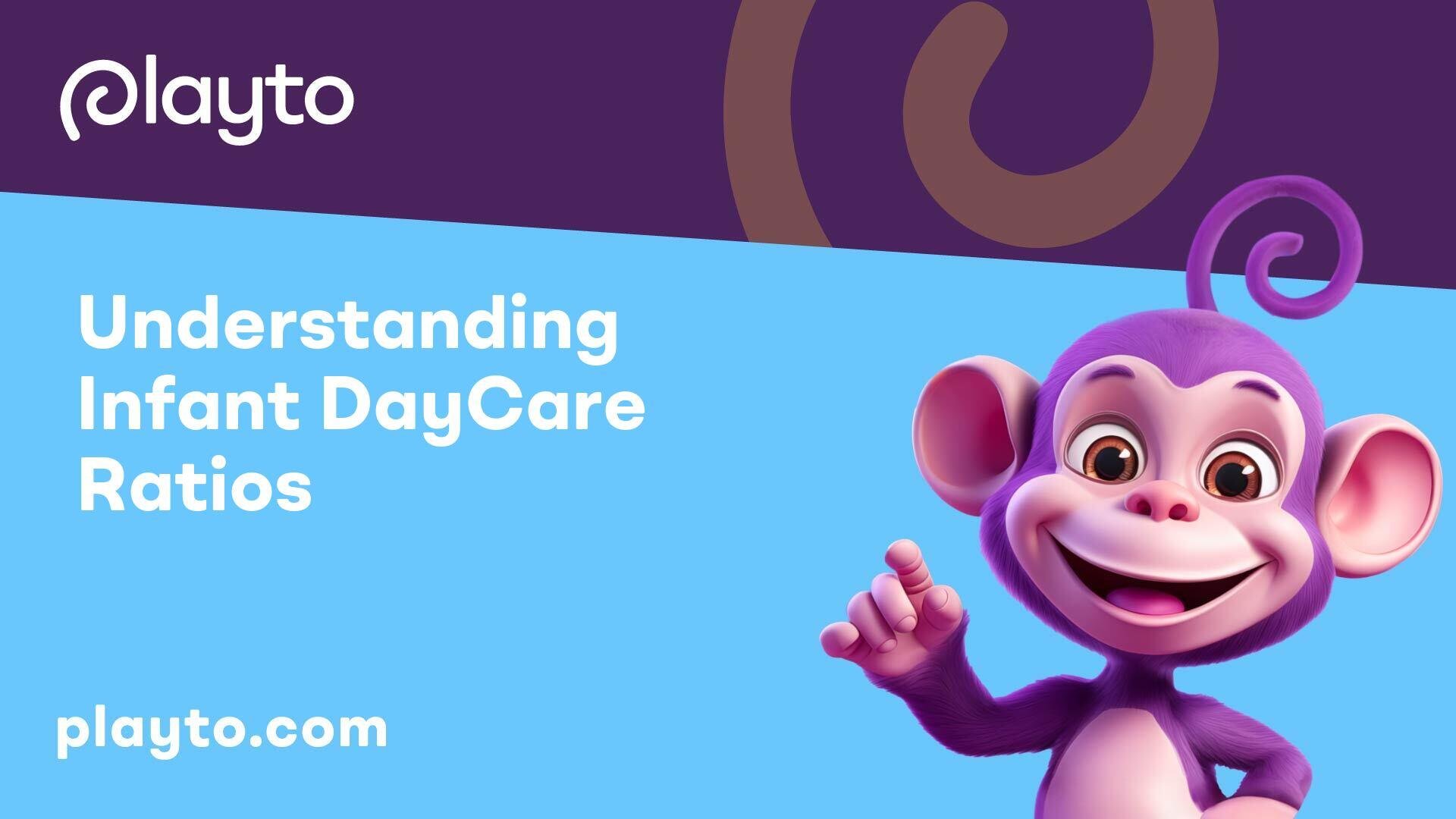
Understanding Daycare Ratios
When it comes to the quality of childcare, understanding infant daycare ratios is essential. Low staff-to-child ratios and small group sizes play a critical role in ensuring that each child receives adequate attention and care from their teacher or caregiver. This is particularly important for infants and young children, as they require more individualized care and supervision.
Importance of Low Ratios
Maintaining low staff-to-child ratios is crucial for providing a nurturing and supportive environment for children in daycare settings. Research has shown that children benefit significantly from more one-on-one interaction with their caregivers. In general, younger children, such as infants and toddlers, require more adults present and smaller group sizes to ensure their safety and well-being.
Ensuring low ratios not only promotes better supervision but also enhances the quality of interactions between caregivers and children. With more personalized attention, caregivers can better address the individual needs of each child, fostering their development and building secure attachments.
State Regulations
Childcare regulations regarding staff-to-child ratios and group sizes vary by state and type of program. Each state sets its own guidelines to ensure the safety, well-being, and development of children in daycare programs. States that license child care centers have specific requirements for child-to-staff ratios for different age groups, with lower staff-child ratios typically mandated for younger age groups.
For families considering daycare options, it is essential to be aware of the state regulations governing staff-to-child ratios and group sizes. By understanding and adhering to these regulations, parents can make informed decisions about the quality of care their children will receive. To find specific information about staff-to-child ratios in your state, you can refer to the "Understanding and Finding Child Care Resources" page on your state's childcare website.
By recognizing the importance of low staff-to-child ratios and compliance with state regulations, parents can select daycare providers that prioritize the individual needs of each child. Creating a safe and supportive environment with adequate supervision and personalized care is fundamental to promoting the well-being and development of children in daycare settings.

Child-to-Staff Ratios
Ensuring appropriate child-to-staff ratios in daycare settings is vital for maintaining a safe and nurturing environment for children. The ratios differ based on the age group being cared for, with specific guidelines established to promote individualized attention and quality care. Here we explore the recommended child-to-staff ratios for infants and toddlers, as well as preschoolers and school-age children.
Infants and Toddlers
When it comes to providing care for infants and toddlers in daycare settings, the Child Care outlines specific guidelines to ensure their well-being. In family child care home programs with mixed-age groups that include infants and toddlers, a maximum staff-to-child ratio of 1:6 should be maintained. Additionally, no more than two of these children should be 24 months or younger.
In center-based programs, infants should be cared for in groups no larger than six, with a ratio of one child care provider to no more than three infants. For toddlers, groups should not exceed eight children, with a ratio of one provider to no more than four toddlers [3].
These ratios are designed to ensure that infants and toddlers receive the individualized care and attention they require during this crucial stage of development. By maintaining low child-to-staff ratios, daycare centers can promote a supportive environment that fosters bonding, security, and optimal growth for the youngest members of their care.
Preschoolers and School-Age
As children grow and transition into preschoolers and school-age, the child-to-staff ratios adjust to meet their evolving needs. State-specific regulations, such as those found in the Ohio Revised Code, dictate the staff-to-child ratio and group size requirements for different age categories.
The maximum number of children per child care staff member and maximum group size vary based on the age category of the children. When age groups are combined, the ratios applicable to the younger age group shall apply. This approach ensures that each child receives adequate supervision and support according to their developmental stage.
By adhering to these guidelines and regulations, daycare centers can maintain a safe and nurturing environment for preschoolers and school-age children. Individualized attention, educational engagement, and emotional support are key components facilitated by appropriate child-to-staff ratios, contributing to a positive and enriching daycare experience for children of all ages.

Impact on Quality
When it comes to daycare settings, the child-to-staff ratios and group sizes play a crucial role in shaping the quality of care and education a child receives. Understanding the impact of these ratios on educational benefits and emotional development is vital for ensuring optimal growth and well-being in young children.
Educational Benefits
Research indicates that programs with low child-to-staff ratios and smaller classroom sizes have a significant positive impact on the quality of education and student experiences. High school students in smaller classes tend to achieve higher grades and perform better on university entrance exams [2]. In daycare settings, smaller group sizes allow for more personalized attention and support, leading to enhanced cognitive development and academic readiness.
Within a daycare environment, infants and toddlers in smaller groups with sufficient numbers of providers tend to develop better language and socio-emotional skills. Quality interactions in these settings support early language acquisition and socialization, laying a strong foundation for future educational success. For more insights on promoting infant development in daycare, explore our article on daycare activities to boost infant development.
Emotional Development
The quality of interactions between children and providers is significantly influenced by provider-to-child ratios. Studies have shown that when ratios improve, especially for very young children, the quality of interactions also enhances. Lower staff-to-child ratios create an environment where caregivers can form meaningful connections with children, fostering trust and emotional security.
In daycare settings with lower ratios, children have more opportunities for positive social-emotional growth. Enhanced social skills development, such as empathy, cooperation, and communication, is facilitated by the increased individual attention and support provided to each child. These positive interactions not only contribute to emotional well-being but also lay the groundwork for healthy social relationships later in life.
Quality Rating and Improvement Systems (QRIS) recognize the importance of child-staff ratios as a fundamental quality indicator in assessing daycare programs. By incorporating ratios into quality assessments, these systems aim to standardize quality evaluations and ensure high-quality care for young children. For more information on optimizing emotional development in infants within daycare settings, check out our resources on infant caregiver-parent collaboration.
Understanding the impact of child-to-staff ratios on educational benefits and emotional development is essential for creating nurturing and supportive daycare environments that promote holistic growth in young children. By prioritizing quality interactions and maintaining appropriate ratios, daycare providers can enhance the overall well-being and developmental outcomes of the children in their care.

Research Findings
In the realm of childcare, research plays a pivotal role in shaping policies and practices to ensure the well-being and development of children. Two crucial aspects that research has shed light on are the impact of provider-to-child ratios and the quality of interactions within childcare settings.
Provider-to-Child Ratio Impact
Studies underscore the significance of maintaining low child-to-staff ratios in daycare settings. Research indicates that programs with low child-to-staff ratios and smaller classroom sizes yield positive outcomes in terms of educational quality and student experiences. For instance, high school students in smaller classes tend to have higher grades and perform better on university entrance exams.
Infants and toddlers, in particular, benefit significantly from being grouped in smaller settings with an adequate number of providers. It has been observed that infants in center-based programs should ideally be cared for in groups no larger than six, with a provider-to-child ratio not exceeding 1:3, while for toddlers, the recommended group size is no larger than eight, with a ratio of 1:4 [3]. Such optimal ratios ensure that children receive the attention and care necessary for their early development and well-being.
Quality of Interactions
Quality interactions between caregivers and children are essential for fostering education and emotional development in childcare settings. Research suggests that infants and toddlers who are part of smaller groups with sufficient providers tend to develop better language and socio-emotional skills. Moreover, children in centers with improved ratios and group sizes are more likely to receive higher quality care and form secure emotional attachments to their providers.
The National Institute of Child Health and Human Development (NICHD) study further supports the correlation between provider-to-child ratios and caregiving quality. Infants and toddlers under ratios such as 1:3 for infants and 1:4 for toddlers are more prone to experiencing highly rated caregiving and engaging in developmentally appropriate activities, enhancing their overall learning and growth compared to those in settings with less favorable ratios [3].
By delving into research findings regarding provider-to-child ratios and the quality of interactions, childcare facilities can optimize their practices to create nurturing and enriching environments for the young ones in their care. These insights contribute to the ongoing efforts to enhance the standards and effectiveness of daycare services for the benefit of children and families alike.

Practical Regulations
When it comes to ensuring the safety and well-being of children in daycare settings, it is essential to adhere to Ohio Standards for practical regulations. These standards outline specific requirements for staff supervision and child-to-staff ratios to maintain a secure and nurturing environment for all children.
Ohio Standards
In Ohio, a child care center must have at least two responsible adults present when there are seven or more children in the center to ensure adequate supervision and care. It is mandatory for centers to organize children into small groups, provide continuity of care, and ensure that no child is left alone or unsupervised.
The regulations emphasize the importance of maintaining a low child-to-staff ratio to guarantee individual attention and proper care for each child. By following these Ohio Standards, daycare centers can create a safe and supportive environment that promotes children's development and well-being.
Staff Supervision
In accordance with Ohio regulations, daycare centers must adhere to specific guidelines regarding staff supervision to maintain a secure and nurturing environment. The staff-to-child ratios and group sizes are determined based on the age category of the children in care.
- The maximum number of children per child care staff member varies depending on the age group and activities taking place in the daycare center.
- When age groups are combined, the ratios applicable to the younger age group shall apply, ensuring that younger children receive appropriate supervision and care.
- For scenarios where toddlers or preschool-age children are napping, specific criteria dictate that the maximum number of children per staff member can be adjusted, provided that the established criteria are met.
By implementing stringent staff supervision practices and adhering to Ohio Standards for staff-to-child ratios, daycare centers in Ohio can ensure the safety and well-being of children in their care. Regular monitoring and compliance with these regulations are crucial for maintaining high-quality care and promoting a nurturing environment for all children.
Safe Group Sizes
Ensuring safe group sizes within daycare facilities is paramount to providing a nurturing and conducive environment for young children. This section focuses on the maximum group numbers and age-based variations that are crucial considerations in maintaining proper ratios for effective childcare.
Maximum Group Numbers
According to research by the Center for Law and Social Policy (CLASP), infants in center-based programs should ideally be cared for in groups no larger than six, with ratios of one child care provider to no more than three infants. Likewise, toddlers are recommended to be cared for in groups no larger than eight, with ratios of one provider to no more than four toddlers.
Maintaining these recommended maximum group numbers ensures that each child receives adequate attention and care from the providers, fostering a more secure and personalized childcare experience. By adhering to these group size guidelines, daycare centers can better meet the individual needs of each child and promote a safe and supportive environment for their development.
Age-Based Variations
The ratios and group sizes within daycare settings often vary based on the age of the children under care. Studies highlighted by CLASP indicate that infants and toddlers benefit significantly from being in smaller groups with sufficient numbers of providers. Infants, primarily those aged between birth to one year, thrive in environments with a provider-to-child ratio of 1:3. On the other hand, toddlers, typically aged between one to three years, show improved language and socio-emotional skills in groups with a provider-to-child ratio of 1:4.
Customizing the group sizes and ratios based on the age of the children is critical for addressing their developmental needs and ensuring quality care. As identified by the National Institute of Child Health and Human Development (NICHD) study, young children with better provider-to-child ratios are more likely to experience high-quality caregiving and developmentally appropriate activities, enhancing their overall growth and well-being.
In practice, adhering to these age-based variations not only supports the healthy development of children but also plays a vital role in creating a nurturing and responsive daycare environment. By prioritizing safe group sizes and appropriate ratios, daycare centers can effectively cater to the unique requirements of infants and toddlers, laying a strong foundation for their ongoing growth and learning experiences.
Federal Requirements
In the realm of daycare regulations, federal mandates play a vital role in ensuring the safety and well-being of children under daycare supervision. These requirements are designed to establish standards for child group sizes and staff-to-child ratios, ultimately safeguarding children's development and fostering a secure environment. Lower staff-to-child ratios and smaller group sizes in daycare settings have been associated with improved supervision, personalized attention, and enhanced social skill development through consistent interactions within smaller groups [4].
State Standards
State standards regarding daycare ratios are formulated with the age of the youngest child in mind to ensure appropriate supervision and care for all children. These standards are crucial for maintaining a safe and nurturing environment within daycare facilities. Exceptions can be made in specific circumstances to maintain specific ratios even with the presence of a younger child, ensuring that each child receives the necessary attention and supervision.
Quality Rating Systems
Quality Rating and Improvement Systems (QRIS) serve as a cornerstone in evaluating and enhancing the quality of daycare programs. These systems incorporate child-staff ratios as a fundamental quality indicator to assess and improve the quality of childcare services. By standardizing quality assessments in Early Childhood Education and Care (ECEC) settings, QRIS recognize the critical role that ratios play in ensuring high-quality care for young children. Emphasizing the importance of adequate staffing ratios and group sizes, QRIS aim to elevate the overall standard of care provided to children in daycare settings to promote their well-being and development.
Continuous Monitoring
In the realm of daycare operations, continuous monitoring of regulations is essential to uphold the safety and well-being of children in care settings. This section focuses on the importance of updated regulations and compliance guidelines to ensure that daycare facilities maintain the highest standards of care.
Updated Regulations
It is crucial for daycare centers to stay informed about the latest regulations regarding staff-to-child ratios and group sizes. The Ohio Revised Code, last updated on August 28, 2023, provides clear guidelines for daycare center staff-to-child ratios. These regulations are put in place to safeguard the well-being of children and promote a nurturing environment within daycare facilities.
Keeping abreast of the most recent standards ensures that daycare centers are compliant with state-specific regulations and are equipped to provide a safe and enriching environment for children. By adhering to updated guidelines, daycare centers demonstrate their commitment to maintaining high-quality care standards.
Compliance Guidelines
In adherence to federal law, states and territories are mandated to establish standards for child group sizes and staff-to-child ratios to foster the safety, well-being, and development of children in daycare programs. State-specific regulations dictate the staff-to-child ratio and group size requirements in daycare settings, providing necessary guidance on maintaining safe and effective supervision.
Daycare facilities must follow the recommendations from early childhood experts to ensure appropriate ratios and group sizes that promote a conducive environment for children's growth and learning. Playto emphasizes that laws addressing staff ratios have been established in all 50 states to prioritize child safety and well-being within daycare centers and family child care homes.
To guarantee compliance with the regulations, daycare centers must be diligent in their monitoring efforts and promptly implement any necessary adjustments to align with current guidelines. It is essential for daycare staff to understand and adhere to the compliance guidelines to provide children with a secure and nurturing environment while in their care.
Staying informed about the latest regulations and dutifully following compliance guidelines will ensure that daycare facilities prioritize the safety and welfare of children, fostering an environment where children can thrive and develop to their fullest potential.
References
[1]: https://childcare.gov/consumer-education/ratios-and-group-sizes
[2]: https://worldpopulationreview.com/state-rankings/child-care-ratio-by-state
[3]: https://www.clasp.org/improve-center-ratios-and-group-sizes/
